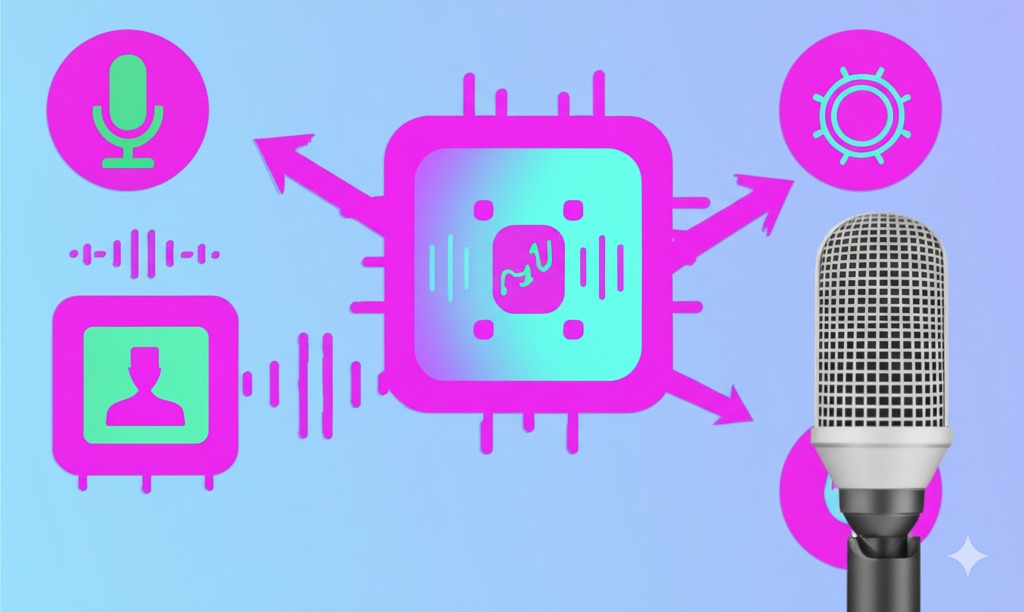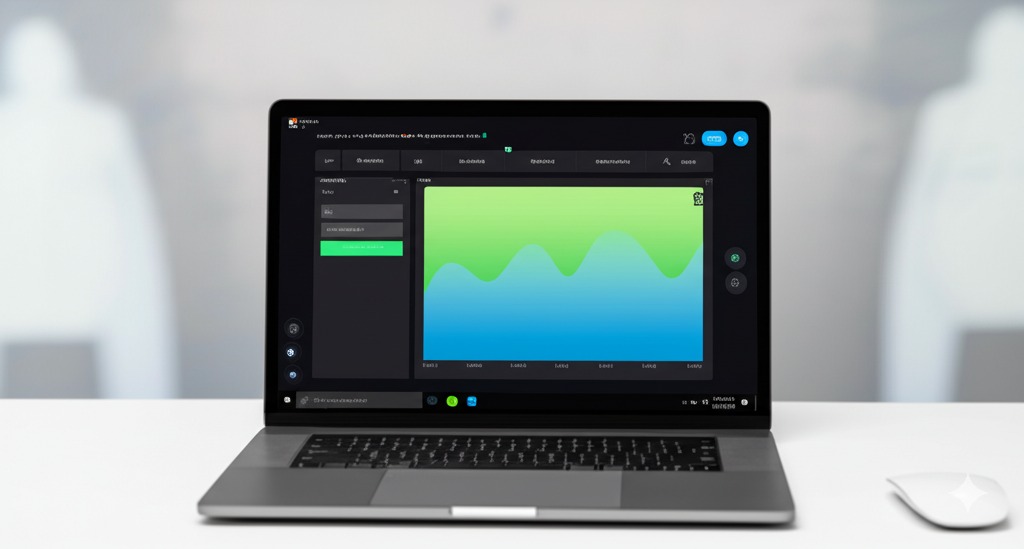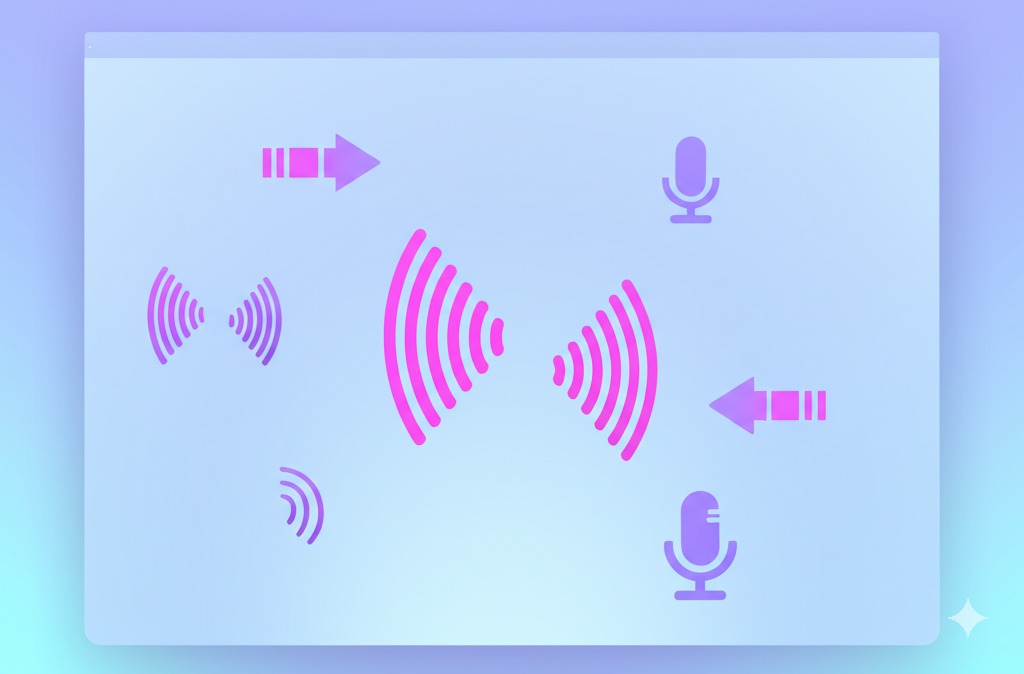
To build a custom AI voice for brand, pick a no-code platform, decide how you want your brand to sound, adjust the voice settings, test it with different content, and add it to your marketing channels. It’s that simple – no tech skills needed. Today’s AI voice tools let you create a unique voice that customers will recognize whether they’re watching your videos, calling customer service, or using your app. A consistent voice helps people connect with your brand and remember you better than your competitors who all sound the same.
Understanding AI Voice Technology in 2025: What’s In It For Your Brand
Today’s text-to-speech technology has gotten really good – so good that most people can’t tell it’s not a real person speaking. And the best part? You don’t need to be a tech expert to use it anymore.
Using a custom AI voice for brand identity instead of a generic robot voice makes a big difference. When customers hear the same friendly voice every time they interact with your business, they feel more connected to you. Studies show that brands with consistent voices keep 23% more customers compared to those using random voices.
Your voice becomes part of how people remember you – just like your logo or colors. In fact, brand voice identity can help people remember your business 35% better than just visual stuff alone.

What to Look For in No-Code Voice Creating Tools
When you’re picking a platform for no-code voice creation, look for these important features:
- Voice customization: Make sure you can change how the voice sounds – things like how high or low it is, how fast it talks, and whether it sounds happy, serious, or somewhere in between.
- Creating options: Some tools let you copy an existing voice (like your spokesperson), while others help you build a completely new voice.
- Works with your other tools: Check if the voice platform connects with your website, marketing tools, and customer service systems.
- File types: Make sure you can get your voice in formats you’ll need (like MP3 files) for all the places you want to use it.
- Languages: If you sell to people who speak different languages, check that the platform handles all the languages you need.
Step-by-Step Guide: Creating Your Brand’s Voice Identity
1. Define Your Brand’s Voice Persona
Start by answering these questions:
- Who would your brand be if it were a person? (Age, gender, personality traits)
- What emotions should your voice convey? (Friendly, authoritative, energetic)
- How does your target audience speak? (Formal, casual, technical)
2. Choose the Right Platform
Several no-code platform for brand voice creation options are available:
- Murf.ai offers extensive customization with an intuitive interface ideal for marketing content.
- FLIKI.AI specializes in natural-sounding voices with emotional range for storytelling.
- LOVO.AI provides excellent multilingual support for global brands.
- Play.HT offers advanced voice cloning capabilities.
- VoiceOverMaker.io focuses on quick creation for content creators.
- Speechify provides accessibility-focused voice solutions.
3. Customize Your Voice
Most platforms offer these adjustment options:
- Pitch (how high or low the voice sounds)
- Speech rate (how quickly the voice talks)
- Emphasis patterns (which words get stressed)
- Emotional tone (happy, serious, enthusiastic)
4. Test Your Voice
Before finalizing, test your voice identity creation across different use cases:
- Customer service scripts
- Product explanations
- Marketing messages
- Notifications and alerts
Get feedback from team members and a small group of customers about how the voice makes them feel and whether it fits your brand.
5. Refine Based on Feedback
Make adjustments based on testing results until you have a voice that consistently represents your brand personality and resonates with your audience.
Voice Brand Psychology: Strategic Voice Design for Audience Targeting
The psychology behind voice branding strategy is really interesting and powerful. Research shows that different voice characteristics create different feelings:
- Lower-pitched voices sound more trustworthy (good for banks or security companies)
- Higher-pitched voices sound more friendly and helpful (good for customer service)
- Fast-talking voices feel exciting, while slower voices feel thoughtful
Different people respond differently to voices:
- Younger people (18-34) usually like faster, more energetic voices
- Older people often prefer moderate speed and clear pronunciation
- Local accents can make people trust you more if they’re from the same area
To use this knowledge:
- Create audio brand guidelines that list exactly how your voice should sound
- Test different voice styles with small groups to see which ones work better
- Keep track of how people respond to different voice styles
This isn’t just about making a nice voice—it’s about creating a voice that connects with your specific audience.
Implementation Strategies Across Customer Touchpoints
Once you’ve created your custom AI voice branding, here’s how to use it:
Customer Service Applications
Replace those robotic phone menus with your branded voice for a more personal experience. Studies show that custom voice experiences in phone systems can reduce caller frustration by up to 40%.
Marketing Content
Use your brand voice for video narration, podcast intros, radio ads, and explainer videos. This creates a consistent audio experience across all channels. Many content creators are now converting their blogs to audio using custom AI voices to reach more people.
Product Interfaces
Use your brand voice in your app for notifications, guidance, and accessibility features. This reinforces brand recognition and makes your mobile applications more accessible to everyone.
Social Media Content
Create distinctive audio for social platforms—especially important for TikTok and YouTube content where voice can help stop scrolling and capture attention.
Events and Presentations
Use your brand voice for announcements, introductions, and virtual event narration. This extends your brand presence into live environments and professional presentations.

Case Studies: Successful Brand Voice Implementations
Virtual Voice Products (VVP)
VVP implemented custom AI voices for hotel and correctional facility communication systems. The consistent voice experience improved guest satisfaction scores by 28% in hotels and reduced communication errors in facilities by 35%.
Dasha AI in Sales
A mid-sized insurance company used conversational AI voice technology from Dasha AI to create personalized sales outreach calls. Their lead conversion rates increased by 30% compared to email campaigns, and customers reported they often couldn’t tell they were speaking with an AI. Source: Dasha AI Sales Success
Respeecher for Media Production
A documentary production studio used Respeecher’s synthetic voice generator technology to recreate a historical figure’s voice based on limited original recordings. This created an authentic narration experience that increased audience engagement by 45% compared to using a traditional voice actor. Source: Respeecher Case Study
Measuring ROI: KPIs for Voice AI Implementation
To measure the success of your text-to-speech brand voice, track these key performance indicators:
Brand Recognition Metrics
- Conduct before/after surveys measuring brand voice recognition
- Track changes in brand recall scores
Customer Experience Metrics
- Monitor changes in Net Promoter Score (NPS) after voice implementation
- Compare customer satisfaction scores across voice and non-voice touchpoints
Engagement Metrics
- Time spent on voice-enabled content vs. text-only content
- Completion rates for voice-guided processes
Operational Metrics
- Production time savings (voice creation vs. traditional recording)
- Cost comparison against traditional voice talent
Conversion Impact
- A/B test conversion rates between generic and branded voices
- Track changes in call-to-action response rates

Future-Proofing Your Brand Voice Strategy
The brand voice technology landscape continues to evolve rapidly. To stay ahead:
- Stay informed about emerging voice AI capabilities like emotional intelligence and contextual awareness.
- Develop a voice SEO strategy to ensure your content is discoverable through voice search. Voice search optimization is becoming increasingly important as more consumers use voice assistants.
- Create a regular schedule for voice refinement—every 12-18 months review your voice performance and update if needed.
- Establish ethical guidelines for your voice usage, including transparency about AI voice usage when appropriate.
- Consider how your voice will adapt to new platforms and channels as they emerge.
Common Challenges and Solutions for Custom AI Voice for Your Brand
Challenge: The “Uncanny Valley” Effect
When AI voices sound almost human but something feels off, it can create discomfort.
Solution: Sometimes less realism is better. A slightly stylized voice that’s consistently good can outperform a voice that aims for perfect human realism but occasionally falls short.
Challenge: Natural Speech Patterns
AI voices can struggle with the natural rhythm and emphasis patterns of human speech.
Solution: Break long text into shorter, conversational segments and use punctuation strategically to guide the AI’s reading pattern.
Challenge: Stakeholder Agreement
Getting everyone in your organization to agree on a voice can be difficult.
Solution: Use data from customer feedback and A/B testing to make objective decisions rather than relying solely on internal preferences.
Challenge: Technical Integration
Implementing your voice across different systems can be technically challenging.
Solution: Start with standalone applications (like marketing videos) before moving to more complex integrations like real-time customer service.
FAQ Section about Custom AI Voice for Brand
Is voice cloning legal?
Voice cloning is mostly legal, but how you use it matters. Different countries have different rules. In the US, each state has its own laws. In Europe, GDPR protects voice data. If you copy a famous person’s voice without permission, you could get in legal trouble.
What should I put in a voice permission form?
A good permission form should clearly explain what you’ll do with the voice, how long you’ll keep it, how you’ll protect it, and how the person can ask you to delete it. Use simple language that’s easy to understand.
How can companies tell if someone copied their brand’s voice?
Companies can use special software that scans the internet for voices that sound like their brand voice. It works like services that look for unauthorized use of logos or brand names, but for voices instead.
What’s the difference between voice security and voice copying?
Voice security uses your unique voice patterns as a password. Voice copying creates a fake version of your voice to make new recordings. One keeps you safe, the other can potentially trick people.
What rules exist for ethical voice copying?
There are several guidelines from groups like IEEE and NIST. These cover things like getting proper permission, telling people when they’re hearing an AI voice, and keeping voice data secure.
How can I avoid getting tricked by voice scams? Create secret code words with your family for money requests. Be suspicious of urgent calls asking for money. Always verify requests through another way (like texting the person). Use two-factor authentication for important accounts. Learn about common voice scams.
Conclusion about Custom AI Voice for Brand

Voice Cloning Ethics: The Bottom Line
Think about the last time you heard a familiar voice on the phone. You trusted it instantly, right? That’s why voice cloning ethics matters so much.
As AI voices get better, telling what’s real from what’s fake gets harder. This isn’t just a tech problem – it affects real people.
The good news? Preventing voice misuse isn’t complicated. Get permission first. Use protection tools like watermarks. Follow the laws in your country. Be honest about when you’re using AI voices.
If you’re using voice technology for your brand, make good choices now. Write down clear rules. Train your team. Pick the right security tools.
When someone shares their voice with you, they’re sharing something personal. Treat it with respect. Use it only how you promised. Protect it carefully.
Voice technology can do amazing things – helping people who can’t speak, creating better customer service, making games and movies more realistic. By using it ethically, we get all these benefits without the harmful side effects.
Remember: just because you can copy a voice doesn’t mean you should. Always start with permission and work from there.

